Cephalocereus senilis, also known as the Old Man Cactus, is a unique species of cacti native to the Mexican states of Guanajuato and Hidalgo. In the wild, C. senilis is a threatened species, but it’s popularity among gardeners has helped to reduce the threat to wild Old Man Cacti.
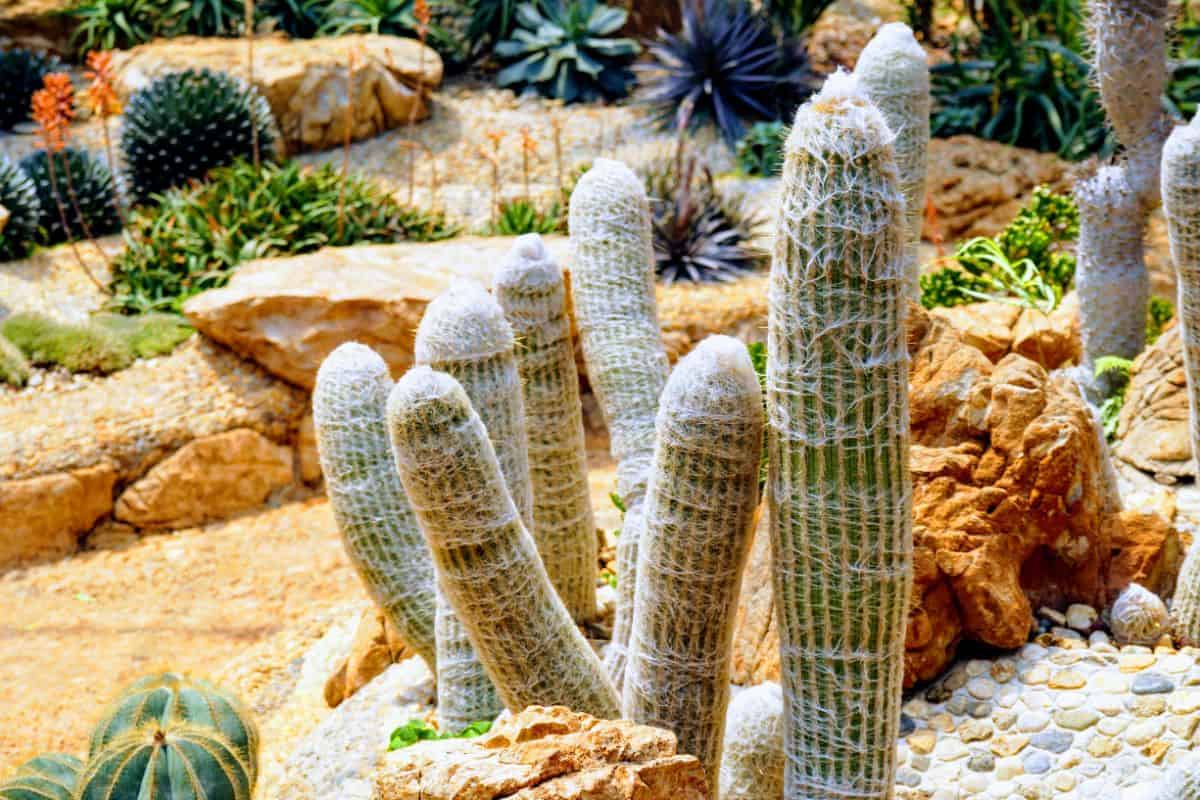
The distinctive wooly appearance of Cephalocereus senilis gives the cactus a certain charm that many gardeners find appealing. It’s a common plant for indoor gardens, but it generally doesn’t grow as large as it does when planted outdoors.
This is due in part to the fact that these cacti can live upwards of 200 years, so it takes a while for them to reach the sizes they achieve in the wild.
Jump to:
Cephalocereus senilis Appearance
| Name: | Cephalocereus senilis |
| Soil: | Fast-draining soil |
| Blooming: | Late spring and early summer |
| Light: | Full sun |
| Water: | When the soil is completely dry |
| Propagation: | Cuttings, offsets and seeds |
The Old Man Cactus is a columnar cactus covered in fine white hairs. The wooly coating hides the cactus’ sharp spines well. The hairs are actually the radial spines of the cactus which disguises the sharper, yellow central spines.
This signature characteristic of C. senilis is actually a unique feature that helps protect the plant from the extreme heat of its natural habitat.
The long, white hair helps to reflect the rays of the sun and insulate the cactus from the heat and cold. The hair resembles the unkempt hairdo of an old man, leading to the nickname Old Man Cactus. In young cacti, the hairs may be more silver in color, whitening with age.
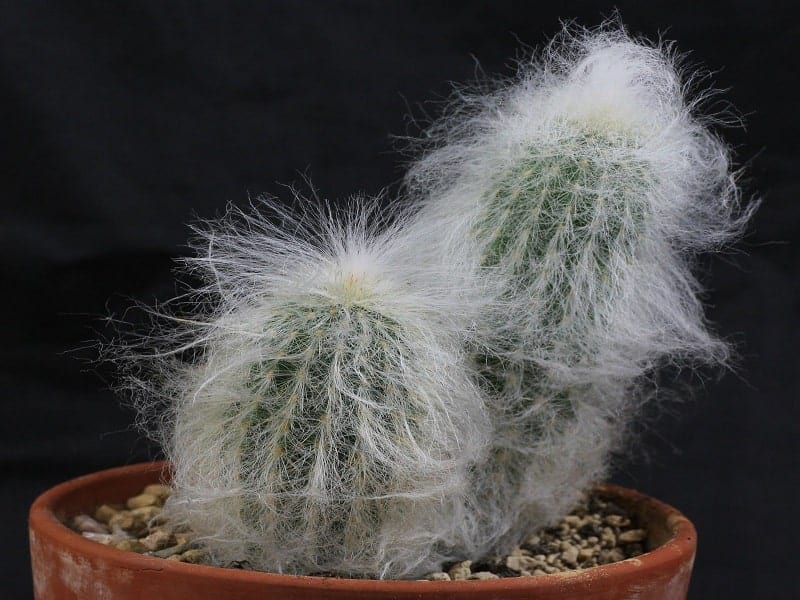
Buy it from:
In the wild, these cacti can reach up to 45 feet tall, but they tend to stay much smaller when grown in containers. They naturally grow in clusters. The stems of C. senilis grow upright and usually have no branches as they can’t normally withstand the additional weight.
When in bloom, Cephalocereus senilis produces red, yellow, or white flowers. However, these flowers are rarely seen before the cactus reaches 10 to 20 years of age. Wild Old Man Cacti also produce pinkish-red fruit, but this rarely occurs when grown indoors.
Caring for Cephalocereus senilis
Cephalocereus senlis are not difficult cacti to care for, as long as you keep their native habitat in mind. Remember, these plants originate in central Mexico, so they like hot, dry climates with plenty of sunshine.
Light
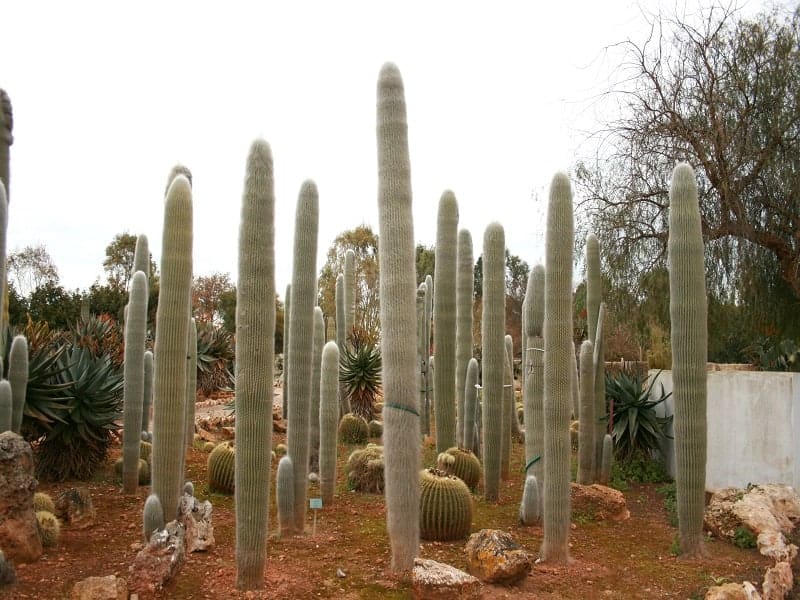
As you might imagine, the Old Man Cactus needs lots of sunlight to thrive. They do best in full sun when planted outdoors. When grown indoors, they need as much light as they can get. A south- or west-facing window is ideal.
Though this cactus prefers as much sunlight as possible, it’s still best to slowly increase light levels if you’re moving the plant outdoors from an indoor location such as your home or a nursery.
No products found.
If you expose your cactus to too much light too soon, it could get sunburned despite its protective coating. Slowly increase light over a period of several weeks to safely allow the plant to adjust.
On the other hand, some indoor spaces won’t be able to provide enough light. Signs of inadequate light levels include a thin stem and discoloration.
If your indoor space doesn’t provide enough light for Cephalocereus senilis, you can always supplement with artificial light. Grow lights are a great way to provide indoor plants with more light without breaking the bank.
If you need help shopping for a new grow light, we’ve compiled a list of our favorites for 2021.
Water
As with most species of cacti, overwatering should be avoided at all costs with Cephalocereus senilis. This plant does best when watered deeply before being allowed to dry out before watering again.
Too much water, or too frequent water, will result in root rot. Due to the nature of root rot, and the Old Man Cactus’ hairy exterior, it’s unlikely you’ll notice the rot before it’s too late to save your beloved cactus.
Instead, be sure to use Old Man Cactus approved soil and make sure it’s dry before watering again. This can be accomplished by using a soil moisture meter or by inserting your finger a couple of inches into the soil near the cactus.
If the soil is still moist, you’ll need to wait longer before watering. If the soil feels dry, you can water without worry.
In the winter, Cephalocereus senilis enters a state of dormancy, so you’ll be able to drastically cut back watering. In fact, they do best with watering just once or twice during the winter season. In spring, a normal watering schedule can be taken back up.
Depending on the climate you live in, you may be watering your cactus more or less frequently throughout the other three seasons. If it’s particularly hot and dry, such as in the Southwestern United States, you’ll need to water more frequently during the summer.
However, if you live in cooler climates, or a climate with more humidity, you may find yourself watering your Old Man Cactus less frequently as the won’t evaporate as quickly. Adjust your watering schedule to your cactus’ needs and you should be able to avoid root rot.
Temperature
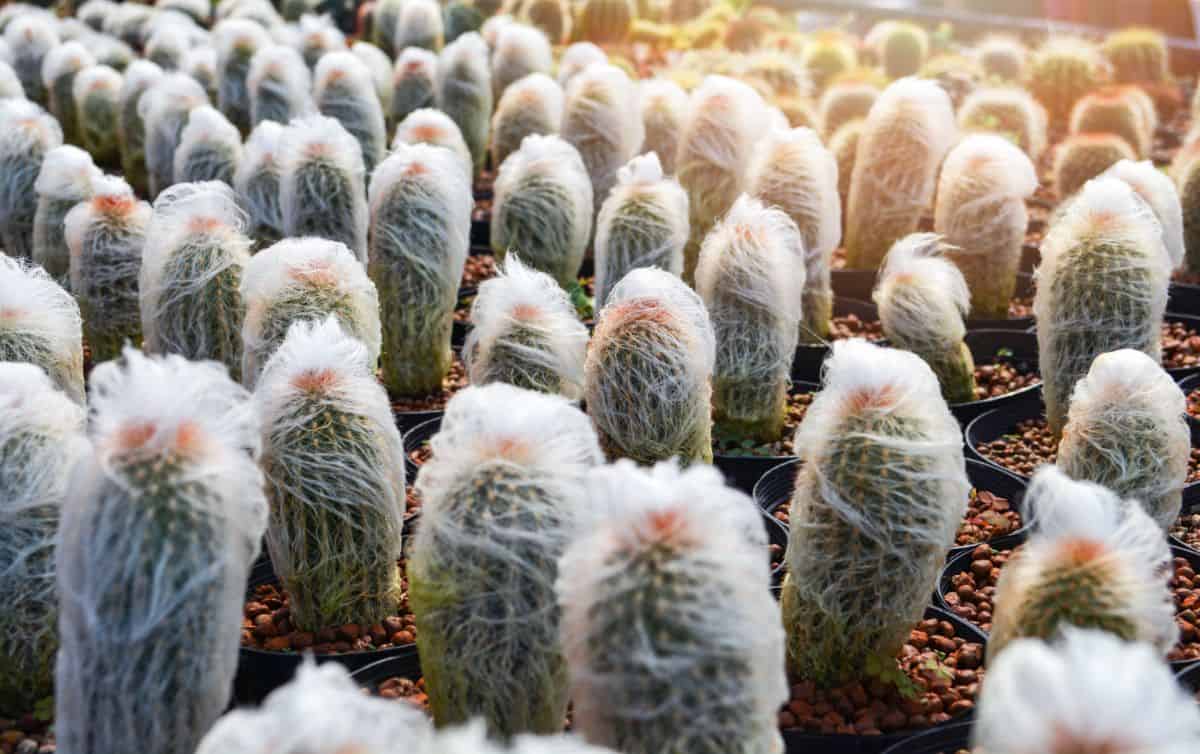
Cephalocereus senilis is not a cold hardy plant. If you live in a climate with harsh winters, you will need to bring your cactus indoors until spring. This cactus is capable of surviving extreme heat, but it will not survive extreme cold.
Generally, a light frost shouldn’t be too much of a concern, but prolonged cold weather will be a problem. If you’re expecting temperatures to drop below freezing, it’s best to keep your cactus protected.
When grown indoors, there’s not usually much to be concerned about in terms of temperature. The average temperature of most indoor spaces is usually adequate for the Old Man Cactus. However, it is helpful to avoid sudden drafts if possible.
Soil
Cephalocereus senilis requires fast-draining soil with few water retaining properties. Although this is true for most cacti, the Old Man Cactus needs particularly gritty soil in order to thrive.
Water retaining ingredients such as clay, peat moss, or coconut coir should be avoided. Instead, opt for a soil high in gritty ingredients such as perlite, coarse sand, gravel, or even bark.
A commercial cactus soil may work, but you can also create your own soil mixture. Combining succulent or cactus soil with a gritty mix is a great way to create the perfect soil for Cephalocereus senilis.
Proper drainage is also an essential aspect of caring for this cactus. If you’re planting the Old Man Cactus in a container, be sure to choose one with a drainage hole. Sure, you can plant it in a cute container without a drainage hole, but it’s not recommended.
It’s much harder to accurately gauge soil moisture when excess water has nowhere to go. It may have been a week or two since you last watered, but that water could be sitting on the bottom of the pot.
While you’re at it, be sure to avoid lining the bottom of the pot with rocks or gravel. Contrary to popular belief, this doesn’t actually improve drainage. Instead, it creates a perched water table.
Instead of draining away, a perched water table actually brings excess water closer to your cactus’ roots. As you might guess, this will eventually lead to root rot.
To ensure your Old Man Cactus’ survival, choose fast-draining soil and a container with a drainage hole.
If you’re growing Cephalocereus senilis outdoors, there’s less of a concern about drainage, but depending on your climate you may still face the challenge of dealing with excess moisture.
Raised beds or berms are a great way to elevate your cacti and give the water somewhere to go. Remember, adequate soil is still important when growing cacti outdoors so make sure your outdoor space has soil that can drain quickly.
Propagating Cephalocereus senilis
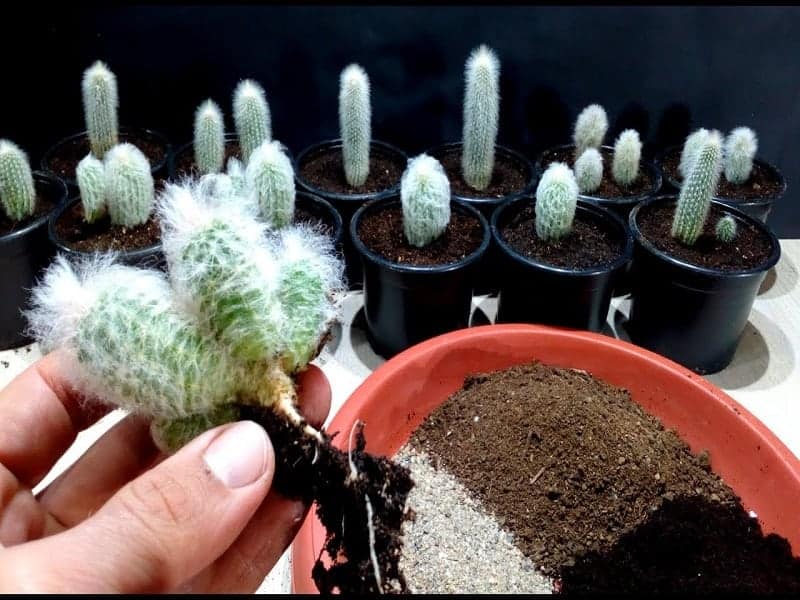
The Old Man Cactus isn’t a difficult plant to propagate, but it is a slow growing succulent, so it’s important to keep that in mind. However, slow growth can be a benefit as you won’t need to repot your cactus every year or worry about it outgrowing your space in the next few years.
The soft, fuzzy hairs of C. senilis can be misleading, but it’s important to use proper handling techniques during propagation. The central spines can be quite sharp, so it’s important that you use caution and use protective gear when necessary.
If you need more information on handling cacti safely, read more here.
Offsets
Removing offsets is the easiest method of Cephalocereus senilis propagation. These cacti naturally grow in clumps, so it’s generally just a matter of gently separating individual cacti.
Most of the time, this can be accomplished by gently uprooting one or more offsets from the clump. You can use your hands, as long as you wear protective clothing, or you can cut the roots with a sharp, clean knife.
Once you’ve separated the offsets, allow them to dry out in the open air for several days. When you break or cut them away from the mother plant, you’re introducing open wounds, which are at risk of infection by bacteria or fungi.
The drying process allows those open wounds to callous, which will help prevent infection and give the offsets a better chance of survival.
Once the cuts have calloused, you can safely plant the offsets in new containers. After they’ve been transplanted, caring for the offsets is as simple as caring for mature Cephalocereus senilis.
Cuttings
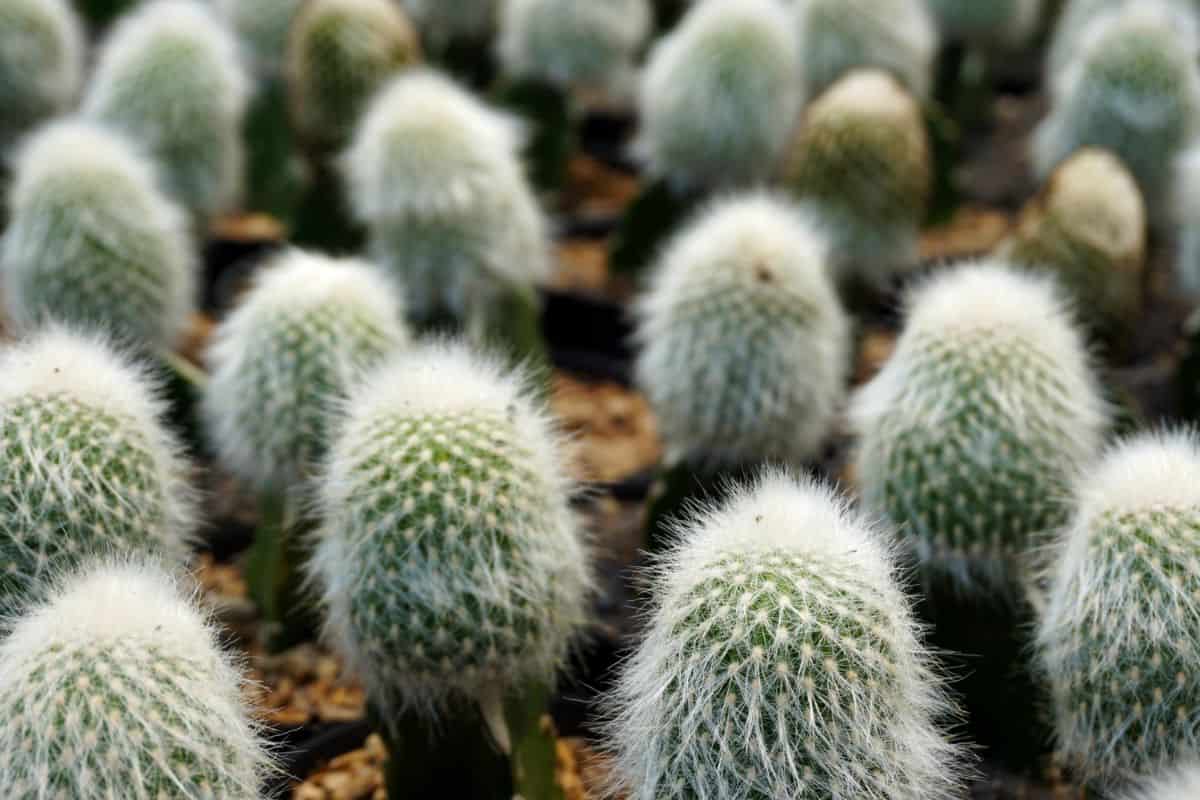
It’s also possible to propagate C. senilis with stem cuttings. Stem cuttings can be taken with a sharp, clean knife or pair of scissors or shears. Be sure to make a clean cut to avoid unnecessary damage to the mother plant or the cutting.
As with offsets, you’ll need to give the cuttings a few days to callous before you can safely plant them into well-draining soil.
An optional step when working with cuttings is to dip them in rooting hormone. This powdery substance is used to encourage faster rooting, but it’s not required. Some gardeners swear by it, while others prefer to propagate without it.
Seeds
The final method of C. senilis propagation is growing from seed. This is not a propagation method for impatient gardeners. These cacti are slow growers, and it can take quite some time before you have a reasonably sized cactus on your hands.
However, it’s still a fun and interesting experiment for the daring cactus lover. But first you’ll need to find some seeds.
If you have existing Old Man Cacti in bloom, you can always try collecting your own seeds, but since these cacti don’t bloom until they’re older, you may not be able to do so. You can also find seeds available for purchase on the internet from your favorite cactus and succulent seed vendor.
Once you’ve acquired Cephalocereus senilis seeds, you can sow them in moist, well-draining soil. It’s best to keep the soil slightly moist during germination but do avoid overly wet soil. As with mature plants, excess moisture may make the seeds rot.
After tiny seedling appear on the surface of the soil, you can begin treating them more like a mature specimen.
Common Pests and Problems
Cephalocereus senilis isn’t any more prone to common succulent pests than any other species of cactus, but it can be more difficult to detect pests because of the hair. While it would be nice if pests lived on the outside of the hair, so they’d be easier to see, that’s not where the food source is.
When checking your Old Man Cactus for pests, you’ll need to cautiously search under the hair while avoiding the sharp spines hidden among the fluff.
Detecting white, fuzzy pests like mealybugs or the webs of spider mites can be especially difficult, so it’s important to examine your plant closely if you suspect an infestation.
Fortunately, dealing with pests on Cephalocereus senilis isn’t any more difficult than treating the problem on other cacti. This is especially true if you can catch the infestation in its early stages.
However, if you’re applying a topical treatment to the Old Man Cactus, you’ll need to be sure that the treatment is reaching the cactus itself and isn’t just sitting atop the hair.
Sources:
“Old Man Cactus.” Horticulture Unlimited.
“How to Grow and Care for an Old Man Cactus (Cephalocereus senilis).” World of Succulents.


